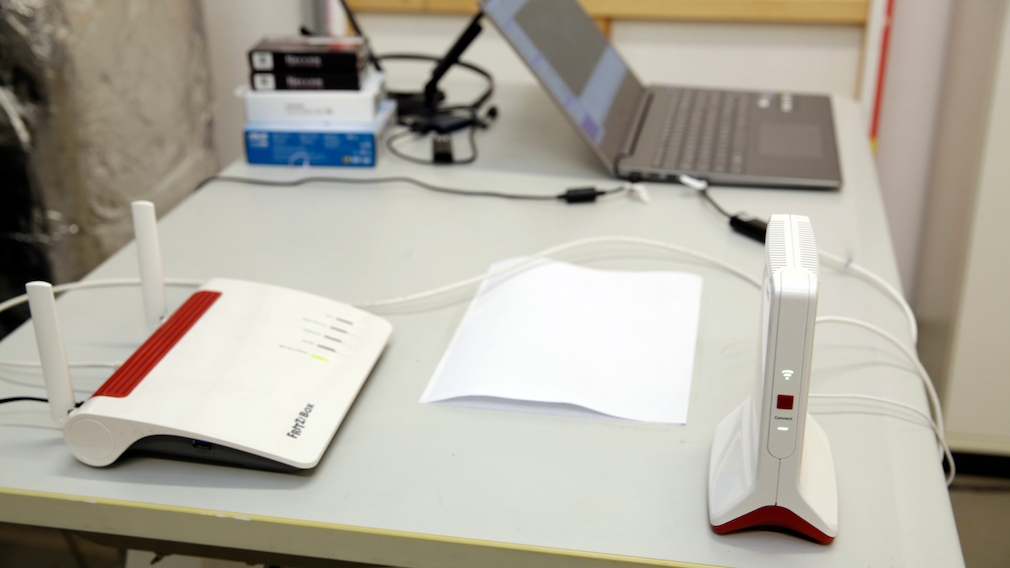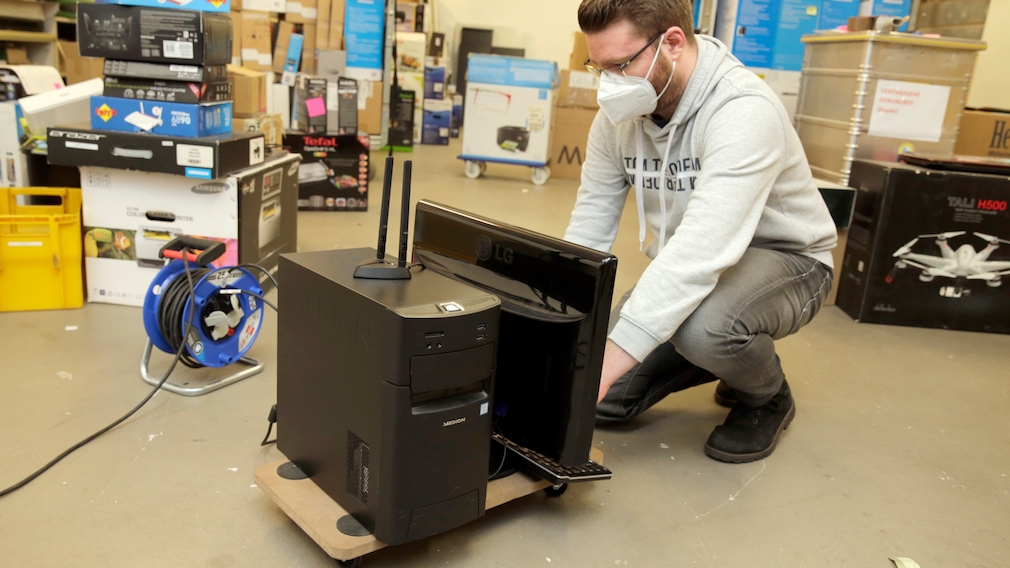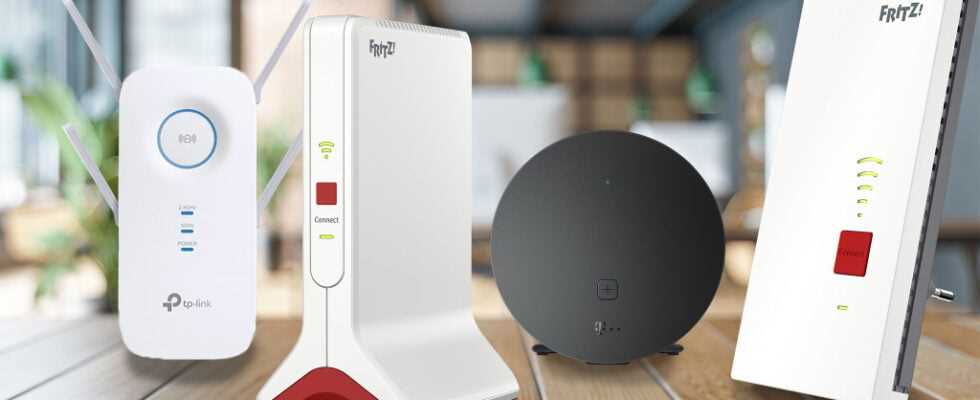Test winner: AVM FritzRepeater 6000
Price tip for Telekom Speedport routers: Telekom Speed Home WLAN
Price tip for AVM’s FritzBoxes: AVM FritzRepeater 1200 AX
This is how COMPUTER BILD tests WLAN repeaters
COMPUTER BILD records the WLAN speed with the Windows on-board program iperf and the graphical user interface jperf.
Of course, a repeater should transmit the data between the router and devices as quickly as possible. Therefore, the measurements of the WLAN speed are the main part of the COMPUTER BILD test. However, modern repeaters also use clever techniques to optimize WLAN management – which is why they also influence the rating. In order for a device to achieve the grade “very good”, the range of functions, setup and operation must also be convincing. These test points are particularly important:
- WiFi speed: COMPUTER BILD records the WLAN speed of repeaters for a PC network card with Wifi 6 (TP-Link TX3000E with two antennas) and for a card with the older Wifi 4 and 5 standards (Asus PCE-AC88 with four antennas). There are four measuring points with increasing distance between the router and the test PC, at which the transmission and reception power is determined. In the practical measurement, the repeaters also have to bridge a long distance between the router and the test PC.
- WiFi Optimization: Better repeaters automatically optimize the WLAN with various functions. The repeater always pushes end devices to the fastest WLAN frequency via band steering. With crossband repeating, the data changes frequency on the way from the router via the repeater to the device (and vice versa) – this increases the speed. And with Multi-User MIMO (MU-MIMO), repeaters exchange data with multiple devices in parallel. Without MU-MIMO, the connection jumps back and forth.

The repeater is connected to a notebook via LAN and to a PC via WLAN. Notebook and PC send data back and forth when measuring the pace.
- equipment and functions: How many LAN ports does the repeater have? How much information can be read from the LEDs on the device? Does the plug have a wireless guest network? And what is the power consumption? The equipment and functions of the repeater are also included in the test rating.
- setup and operation: Setting up a repeater is usually very easy – it is usually sufficient to press the WPS button on the device and on the router. When it comes to operation, however, there are clear differences. While the settings of many representatives can be called up by entering a fixed URL, with some repeaters you first have to laboriously find out and enter the IP address. Some manufacturers provide their devices with smartphone apps.

COMPUTER BILD editor Patrick Skoruppa prepares the test PC. The computer then sends and receives data at several measuring points.
Great even without Wifi 6
Repeater tip without Wifi 6: AVM FritzRepeater 3000
WLAN repeater test: conclusion
Very large households with a FritzBox meet with the Fritz Repeater 6000 a safe choice. For most, the performance is likely to be much cheaper Fritz Repeater 1200 AX already suffice. Speedport users are at Speed Home WiFi of the provider at the right address. If you have a lame router, you can replace its WiFi with the fast mesh network of Telekom repeaters at a reasonable price.
comparison test
WLAN repeater: Optimize WLAN in the home office!
How expensive is a good repeater?
The perfect interaction
Mesh and more: Clever functions
Mesh systems: A special case
So-called mesh systems also master mesh functions. They consist of at least two devices and cannot be connected directly to the router via WLAN. Instead, the first device lands on the router via a LAN cable. It then connects other devices of the mesh system via WLAN. As device configuration becomes more flexible, the boundaries are blurring. That’s how it works Telekom Speed Home WLAN set up with a Telekom Speedport router as a repeater – or alternatively with another router as a mesh system. It is usually cheaper to buy a suitable repeater for the router than to use a mesh system.
WiFi Repeater: Frequently Asked Questions
What is a wifi repeater?
A WiFi repeater is a device that increases the WiFi range of the router.
How does a WiFi repeater work?
WLAN repeaters forward the data between routers and devices. To do this, connect to the router and set up a WLAN with the same name.
How much does a good WiFi booster cost?
You will spend at least 60 euros for a good WiFi repeater.
Where should a WiFi repeater be installed?
It is best to place a WiFi repeater halfway between the router and the destination. If there is only a weak connection to the router at the installation site, you can connect several repeaters in series. When buying, make sure that the repeaters can handle the crossband repeating function – otherwise the speed will decrease significantly with each repeater.
How Fast Should a WiFi Repeater Be?
In the COMPUTER BILD test, good repeaters had a theoretical WLAN speed of at least 1,200 Mbps.
What is the difference between WiFi repeater and WiFi booster?
There is no difference – WiFi repeaters are often referred to colloquially as WiFi amplifiers. The term is actually wrong, because a repeater in no way strengthens the router’s WLAN. Rather, it forwards the data between the router and the device by setting up its own WLAN with the same name. The direct translation “WLAN repeater” would be more appropriate – even if linguistically less nice.
